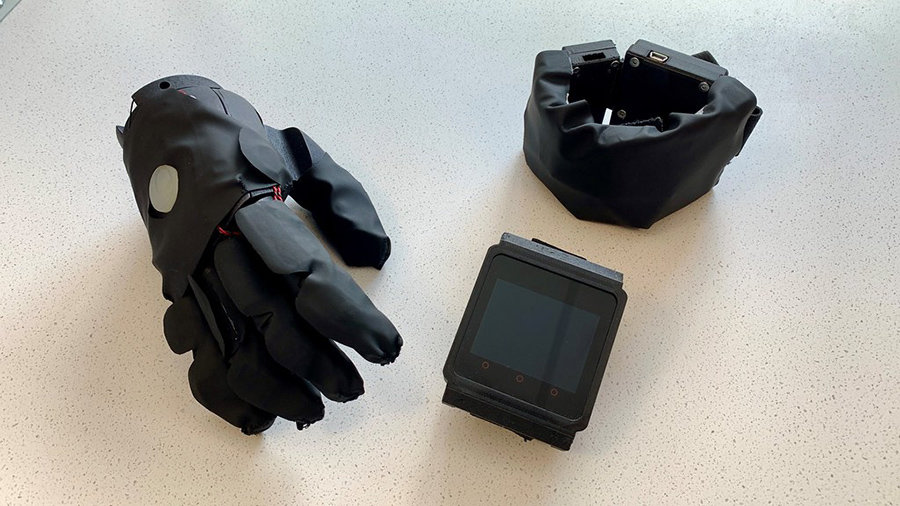Innovative glove and armband device gives people with upper limb prosthetics a ‘sense of touch’

An assistive technology prototype that gives ‘sense of touch’ haptic feedback to amputees is set to be improved with a series of at-home trial start set to begin in August 2023.
The University of Bath has designed a glove and armband device to help upper-arm prosthetic users feel a sense of touch.
Engineers at the university are working with Open Bionics to improve the experience for people who use prosthetic arms.
The project aims to reduce the likelihood of users abandoning prosthetics by involving them in the design process to create a wearable device that meets their needs by providing touch-like feedback through vibrations. Participants will test the device at home, and updates will be made via the internet in direct response to their feedback, giving them the opportunity to customise their device.
The prototype comprises a vibrotactile feedback kit, which participants in the trials will test out during their normal day-to-day activities. The glove and armband include force sensors and vibration effectors, as well as a smartwatch-like microcontroller which allows users to modify the feedback settings through a mobile app.
This app gives users the ability to adjust the intensity and type of vibrations, as well as which sensors are used to activate them. The microcontroller also connects the kit to the internet to enable the recording of relevant data and updating the firmware based on input from the participants.
Postgraduate Researcher Leen Jabban, who is leading the project, said: “Upper limb prostheses often fail to meet the user’s expectations and needs, with up to 75 percent of users abandoning their prosthesis. When they rely on alternative ways to carry out tasks, this can involve compensatory movements that could lead to pain.
“Our previous surveys and interviews have shown that sensory feedback, or the ability to sense how that prosthesis is engaging with objects, is a highly desired feature. This is what we aim to develop.”
The device is being developed following an earlier study which found that people with upper limb differences desire reliable sensory feedback technology that extends beyond simple fingertip sensors, with input from several areas of the hand and arm. Study participants highlighted that despite knowing that feedback would be useful, they needed to try it to know how it would fit into their lives and, thus, how they need it to be designed.
The prototype vibrotactile device comprises sensors that attach to a prosthetic arm and an armband that can be worn on the residual limb.
People interested in taking part in the trials are invited to contact the University of Bath team here.
Dr Benjamin Metcalfe, Deputy Director of the Bath Institute for the Augmented Human, added: “Our overarching goal is to transform the way that assistive technology is designed by using technology to enable at-home co-creation.
“Using the Internet of Things, whereby the technology is connected to the internet, means that both the users and the research team can get a more representative view of how the technology is being used within the home. All stakeholders can view real-time feedback and implement rapid changes to the technology that opens up the scope to co-create and make our research more user-focused, helpful and impactful.”
Early prototypes of the device were developed with funding from the University of Bath Alumni Fund.
A final-year Staffordshire University student developed an affordable prosthetic hand prototype. The prosthetic hand is adjustable and has removable fingers, which means it should fit any shaped hand. It is also made using low-cost processes like 3D printing and resin printing. Learn more here.

